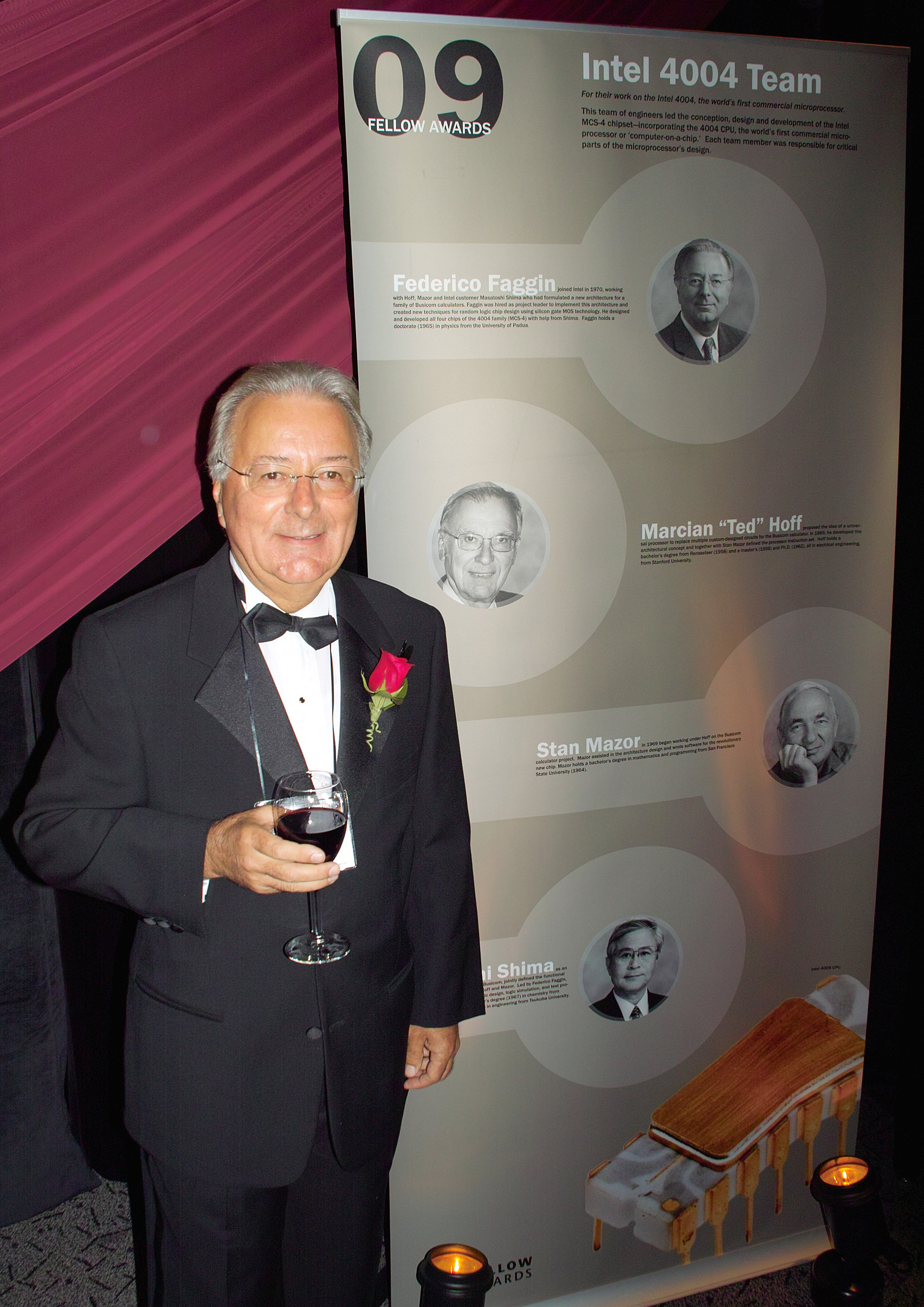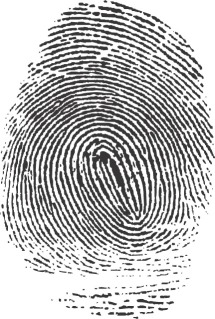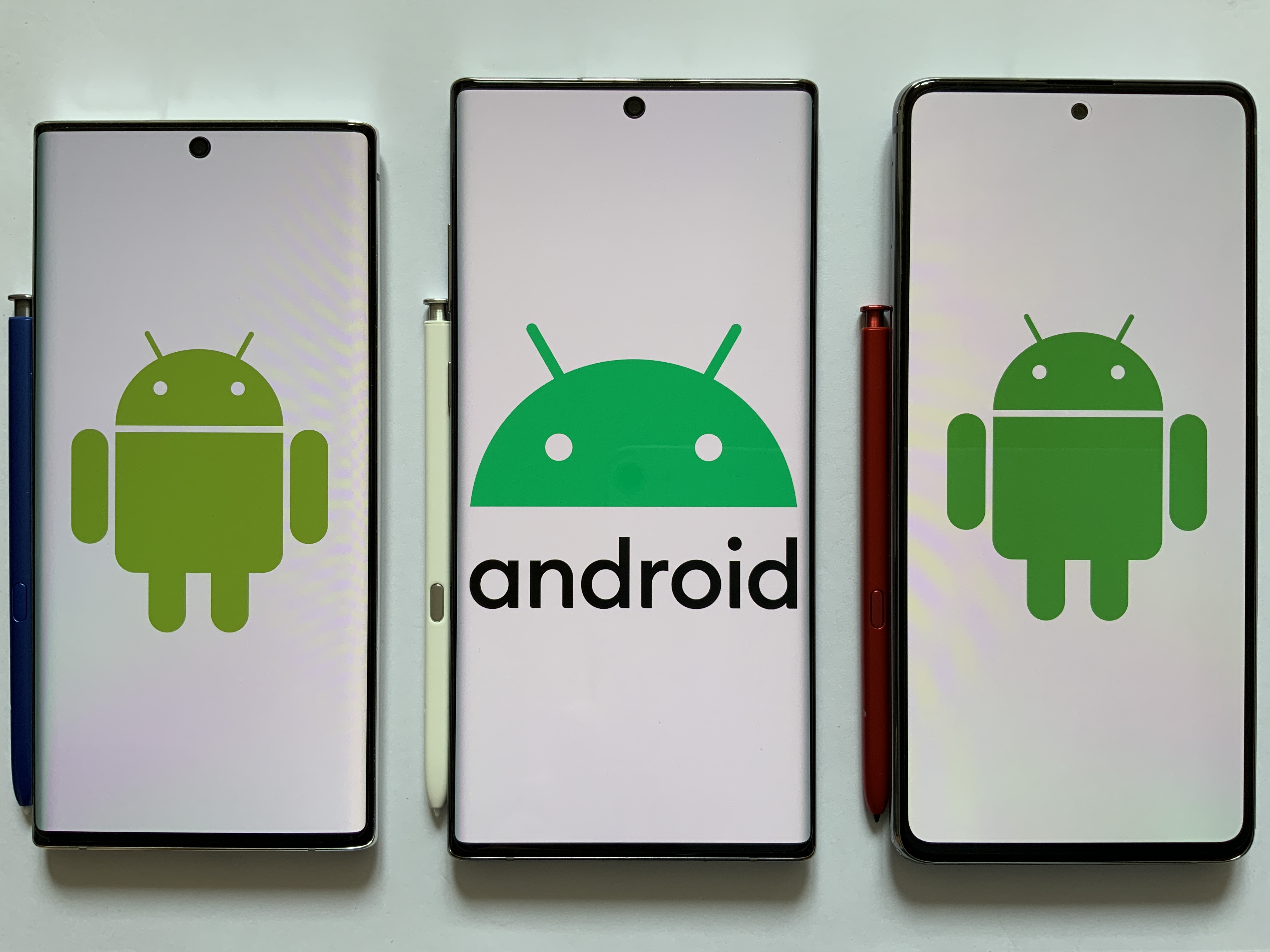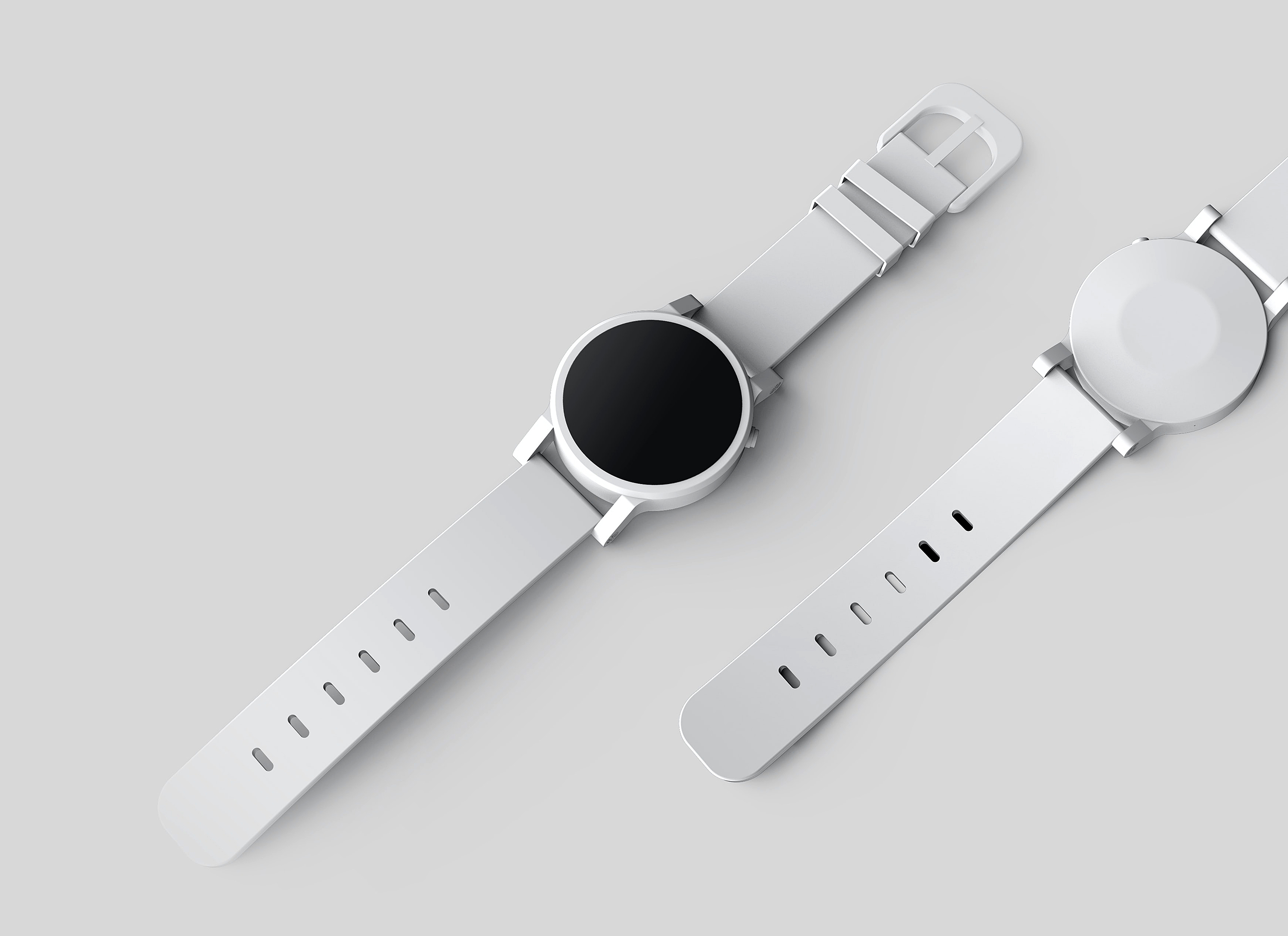|
Synaptics
Synaptics, Inc. is an American neural network technologies and computer-to-human interface devices development company based in San Jose, California. It develops touchpads and fingerprint biometrics technology for computer laptops; touch, display driver, and fingerprint biometrics technology for smartphones; and touch, video and far-field voice, low-power AI processors, and wireless technology for smart home devices, wearables, and automobiles. Synaptics sells its products to original equipment manufacturers (OEMs) and display manufacturers. Synaptics invented a prolific design for a computer touchpad, the click wheel on the classic iPod, Android phones' touch sensors, touch and display driver integrated chips (TDDI), and fingerprint sensors. Its technology is used in devices such as PCs, wearables, drones, gaming systems, media systems, cars, industrial security and monitoring equipment, and virtual reality headsets. History 19861998: Initial years Federico ... [...More Info...] [...Related Items...] OR: [Wikipedia] [Google] [Baidu] |
Federico Faggin
Federico Faggin (, ; born 1 December 1941) is an Italian-American physicist, engineer, inventor and entrepreneur. He is best known for designing the first commercial microprocessor, the Intel 4004. He led the 4004 (MCS-4) project and the design group during the first five years of Intel's microprocessor effort. Faggin also created, while working at Fairchild Semiconductor in 1968, the self-aligned MOS ( metal–oxide–semiconductor) silicon-gate technology (SGT), which made possible MOS semiconductor memory chips, CCD image sensors, and the microprocessor. After the 4004, he led development of the Intel 8008 and 8080, using his SGT methodology for random logic chip design, which was essential to the creation of early Intel microprocessors. He was co-founder (with Ralph Ungermann) and CEO of Zilog, the first company solely dedicated to microprocessors, and led the development of the Zilog Z80 and Z8 processors. He was later the co-founder and CEO of Cygnet Technologies ... [...More Info...] [...Related Items...] OR: [Wikipedia] [Google] [Baidu] |
Carver Mead
Carver Andress Mead (born 1 May 1934) is an American scientist and engineer. He currently holds the position of Gordon and Betty Moore Professor Emeritus of Engineering and Applied Science at the California Institute of Technology (Caltech), having taught there for over 40 years. A pioneer of modern microelectronics, Mead has made contributions to the development and design of semiconductors, digital chips, and silicon compilers, technologies which form the foundations of modern very-large-scale integration chip design. Mead has also been involved in the founding of more than 20 companies. In the 1980s, Mead focused on electronic modeling of human neurology and biology, creating " neuromorphic electronic systems." Most recently, he has called for the reconceptualization of modern physics, revisiting the theoretical debates of Niels Bohr, Albert Einstein and others in light of later experiments and developments in instrumentation. Mead's contributions as a teacher in ... [...More Info...] [...Related Items...] OR: [Wikipedia] [Google] [Baidu] |
Fingerprint Sensor
A fingerprint is an impression left by the friction ridges of a human finger. The recovery of partial fingerprints from a crime scene is an important method of forensic science. Moisture and grease on a finger result in fingerprints on surfaces such as glass or metal. Deliberate impressions of entire fingerprints can be obtained by ink or other substances transferred from the peaks of friction ridges on the skin to a smooth surface such as paper. Fingerprint records normally contain impressions from the pad on the last joint of fingers and thumbs, though fingerprint cards also typically record portions of lower joint areas of the fingers. Human fingerprints are detailed, unique, difficult to alter, and durable over the life of an individual, making them suitable as long-term markers of human identity. They may be employed by police or other authorities to identify individuals who wish to conceal their identity, or to identify people who are incapacitated or dead and thus unab ... [...More Info...] [...Related Items...] OR: [Wikipedia] [Google] [Baidu] |
Touchpads
A touchpad or trackpad is a type of pointing device. Its largest component is a tactile sensor: an electronic device with a flat surface, that detects the motion and position of a user's fingers, and translates them to 2D motion, to control a pointer in a graphical user interface on a computer screen. Touchpads are common on laptop computers, contrasted with desktop computers, where mice are more prevalent. Trackpads are sometimes used with desktop setups where desk space is scarce. Wireless touchpads are also available, as detached accessories. Due to the ability of trackpads to be made small, they were additionally used on personal digital assistants (PDAs) and some portable media players. Operation and function Touchpads operate in several ways, including capacitive sensing or resistive touchscreen. The most common technology used in the 2010s senses the change of capacitance where a finger touches the pad. Capacitance-based touchpads will not sense the tip of a pencil or o ... [...More Info...] [...Related Items...] OR: [Wikipedia] [Google] [Baidu] |
Click Wheel
The iPod click wheel is the navigation component of non touch-screen iPod models. It uses a combination of touch technology and traditional buttons, involving the technology of capacitive sensing, which senses the touch of the user's fingers. The wheel allows a user to find music, videos, photos and play games on the device. The wheel is flush on the face of the iPod and is located below the screen. The click wheel was invented by Norihiko Saito in 1998. The design was first released with the iPod Mini, iPod mini, and was last used with the iPod Nano, iPod nano (5th Generation). The click wheel's design is credited to Apple's senior vice president of worldwide marketing, Phil Schiller. Details The click wheel detects a user's input via its touch sensitive ring. Because of four mechanical buttons that lie beneath it, the ring is able to perform multiple commands.Layton, Julia"How iPods work."How Stuff Works March 14, 2006 (accessed October 12, 2008). For example, browsing throug ... [...More Info...] [...Related Items...] OR: [Wikipedia] [Google] [Baidu] |
Classic IPod
The iPod Classic (stylized and marketed as iPod classic and originally simply iPod) is a discontinued portable media player created and formerly marketed by Apple Inc. There were six generations of the iPod Classic, as well as a spin-off (the iPod Photo) that was later re-integrated into the main iPod line. All generations used a hard drive for storage. The "classic" suffix was formally introduced with the rollout of the sixth-generation iPod on September 5, 2007. Prior to this, all iPod Classic models were simply referred to as iPods; the first iPod released in 2001 was part of this line that would be called "Classic". It was available in silver or black from 2007 onwards, replacing the "signature iPod white". On September 9, 2014, Apple discontinued the iPod Classic. The sixth-generation 160 GB iPod Classic was the last Apple product to use the original 30-pin dock connector and the distinctive click wheel. Technical information User interface iPods with color displays u ... [...More Info...] [...Related Items...] OR: [Wikipedia] [Google] [Baidu] |
Android Phone
This is a list of devices that run on Android, an open source Open source is source code that is made freely available for possible modification and redistribution. Products include permission to use and view the source code, design documents, or content of the product. The open source model is a decentrali ... operating system for smartphones and other devices. A B C D E F G H I J K L M N O P Q R S T U V W X Y Z See also * List of Android TV devices References {{DEFAULTSORT:Android smartphones, List of Technology-related lists ... [...More Info...] [...Related Items...] OR: [Wikipedia] [Google] [Baidu] |
Public Company
A public company is a company whose ownership is organized via shares of share capital, stock which are intended to be freely traded on a stock exchange or in over-the-counter (finance), over-the-counter markets. A public (publicly traded) company can be listed on a stock exchange (listing (finance), listed company), which facilitates the trade of shares, or not (unlisted public company). In some jurisdictions, public companies over a certain size must be listed on an exchange. In most cases, public companies are ''private'' enterprises in the ''private'' sector, and "public" emphasizes their reporting and trading on the public markets. Public companies are formed within the legal systems of particular states and so have associations and formal designations, which are distinct and separate in the polity in which they reside. In the United States, for example, a public company is usually a type of corporation, though a corporation need not be a public company. In the United Kin ... [...More Info...] [...Related Items...] OR: [Wikipedia] [Google] [Baidu] |
Wearable Technology
Wearable technology is any technology that is designed to be used while worn. Common types of wearable technology include smartwatches, fitness trackers, and smartglasses. Wearable electronic devices are often close to or on the surface of the skin, where they detect, analyze, and transmit information such as vital signs, and/or ambient data and which allow in some cases immediate biofeedback to the wearer. Wearable devices collect vast amounts of data from users making use of different behavioral and physiological sensors, which monitor their health status and activity levels. Wrist-worn devices include smartwatches with a touchscreen display, while wristbands are mainly used for fitness tracking but do not contain a touchscreen display. Wearable devices such as activity trackers are an example of the Internet of things, since "things" such as electronics, software, sensors, and connectivity are effectors that enable objects to exchange data (including data quality) through the ... [...More Info...] [...Related Items...] OR: [Wikipedia] [Google] [Baidu] |
Personal Computer
A personal computer, commonly referred to as PC or computer, is a computer designed for individual use. It is typically used for tasks such as Word processor, word processing, web browser, internet browsing, email, multimedia playback, and PC game, gaming. Personal computers are intended to be operated directly by an end user, rather than by a computer expert or technician. Unlike large, costly minicomputers and mainframes, time-sharing by many people at the same time is not used with personal computers. The term home computer has also been used, primarily in the late 1970s and 1980s. The advent of personal computers and the concurrent Digital Revolution have significantly affected the lives of people. Institutional or corporate computer owners in the 1960s had to write their own programs to do any useful work with computers. While personal computer users may develop their applications, usually these systems run commercial software, free-of-charge software ("freeware"), which i ... [...More Info...] [...Related Items...] OR: [Wikipedia] [Google] [Baidu] |
Unmanned Aerial Vehicle
An unmanned aerial vehicle (UAV) or unmanned aircraft system (UAS), commonly known as a drone, is an aircraft with no human pilot, crew, or passengers onboard, but rather is controlled remotely or is autonomous.De Gruyter Handbook of Drone Warfare; 2024. e-ISBN (PDF) 978-3-11-074203-9.H. Pan; M. Zahmatkesh; F. Rekabi-Bana; F. Arvin; J. HuT-STAR: Time-Optimal Swarm Trajectory Planning for Quadrotor Unmanned Aerial Vehicles IEEE Transactions on Intelligent Transportation Systems, 2025. UAVs were originally developed through the twentieth century for military missions too "dull, dirty or dangerous" for humans, and by the twenty-first, they had become essential assets to most militaries. As control technologies improved and costs fell, their use expanded to many non-military applications. These include aerial photography, area coverage,F. Rekabi-Bana; Hu, J.; T. Krajník; Arvin, F.,Unified Robust Path Planning and Optimal Trajectory Generation for Efficient 3D Area Coverage of ... [...More Info...] [...Related Items...] OR: [Wikipedia] [Google] [Baidu] |









